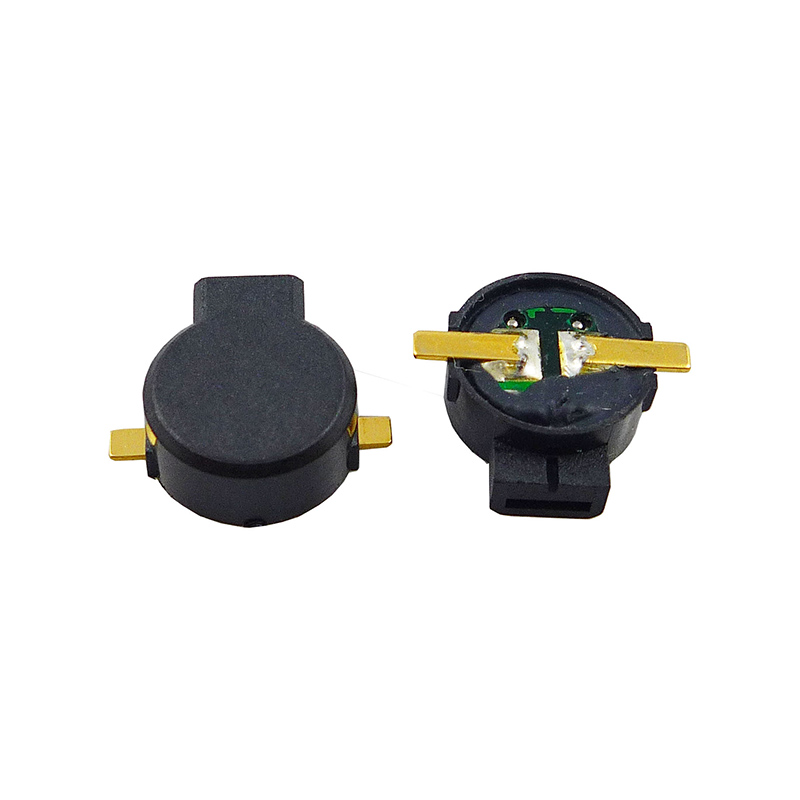The shape and size of the diaphragm in a magnetic buzzer play crucial roles in determining its sound output and efficiency. Here’s how these factors influence the buzzer’s performance:
1. Sound Output
Frequency Response:
Size: A larger diaphragm can produce lower frequencies (bass tones) more effectively due to its ability to move more air. Conversely, a smaller diaphragm is better suited for higher frequencies (treble tones) because it can vibrate more quickly and precisely.
Shape: The shape of the diaphragm affects how sound waves are distributed. For example, a flat diaphragm provides a more uniform sound dispersion, while a conical or dome-shaped diaphragm can focus the sound in specific directions.
Sound Pressure Level (SPL):
Size: Larger diaphragms generally produce higher sound pressure levels because they can displace more air. This results in a louder sound output. Smaller diaphragms may produce lower SPLs but can be more efficient in generating higher frequencies.
Shape: The diaphragm's shape can influence how sound waves radiate from the buzzer. For instance, a diaphragm with a specific contour might concentrate sound waves into a narrower beam, enhancing the perceived loudness in a particular direction.
2. Efficiency
Vibration and Movement:
Size: A larger diaphragm may require more energy to move compared to a smaller one. Therefore, while a larger diaphragm can produce louder sounds, it might be less efficient in terms of energy consumption if not properly designed. Smaller diaphragms generally require less power to achieve the same vibrational movement.
Shape: The diaphragm's shape affects its vibrational characteristics. A well-designed shape can optimize the vibrational patterns, improving efficiency. For example, a diaphragm with an optimized geometric profile might reduce energy losses and improve overall performance.

Acoustic Impedance:
Size: The size of the diaphragm impacts its acoustic impedance, which is a measure of how much the diaphragm resists the movement of sound waves. A larger diaphragm may have different impedance characteristics compared to a smaller one, affecting how efficiently sound is transmitted from the buzzer to the surrounding environment.
Shape: The shape influences how the diaphragm interacts with the surrounding air. A shape that promotes better coupling with the air can enhance efficiency by ensuring that more of the generated sound energy is transmitted effectively.
3. Design Considerations
Balance and Stability:
Size: Larger diaphragms need to be carefully balanced to avoid wobbling or distortion in sound production. Stability is crucial to maintain sound quality and efficiency.
Shape: The shape must support uniform motion across the diaphragm. Irregular shapes or poorly designed contours can lead to uneven vibrations and reduce sound quality.
Resonance:
Size and Shape: The diaphragm’s size and shape can affect the resonance frequency of the buzzer. Properly tuning the diaphragm to resonate at the desired frequencies ensures optimal sound output and reduces unwanted resonances that can degrade performance.
In summary, the diaphragm's size and shape are critical factors in determining the sound output and efficiency of a magnetic buzzer. Larger diaphragms are typically better for producing lower frequencies and higher sound pressure levels but may require more power. Smaller diaphragms excel at higher frequencies and are generally more efficient. The shape of the diaphragm also influences sound dispersion, vibration patterns, and acoustic impedance, all of which impact the buzzer's overall performance. Proper design and optimization of these factors are essential for achieving the desired sound characteristics and efficiency.


 EN
EN  English
English Deutsch
Deutsch 中文简体
中文简体
